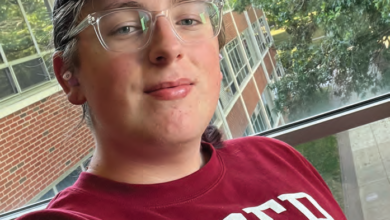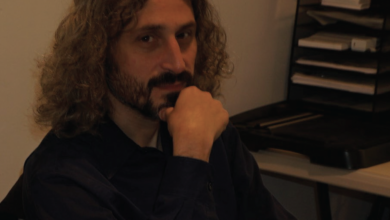
100 DAYS OF PROTESTS
Americans have had the privilege of protesting their government from the Boston Tea Party in 1773 through Black Lives Matter in 2020. There have been demonstrations of protests all across the country for multiple generations, all exhausted with the current state of governance. In 2020, while we were all at home during the beginning stages of COVID-19, we were forced to watch police brutality take the life of George Floyd, sparking a 100-day protest in all 50 states (for the first time in history) and in over 60 countries. I had the chance to be a part of history.
Just five days after the viral video of Floyd, Newark, New Jersey, held a solidarity rally led by The People’s Organization for Progress at the Lincoln Statue outside of the Essex County Courthouse. I saw the tweet about the rally the morning of and thought of ways to tell my boss I could not come in to work. I recall after the killing of Michael Brown in Ferguson, Missouri, in 2014, the summer going into my sophomore year of high school begging my parents to let me go to Newark to show support to the Brown family and the city of Fergurson. All my attempts were shot down by fears of my safety, and my ears were filled with the history of the 1967 Newark riots that left 26 people dead, over 700 injured and caused up to $10 million in damages. But this time was different; I was an adult and my mind was made. I called out of work and quickly hopped in the shower. Although it was only May, the heat reminded me of July. I packed sunscreen, gloves, hand sanitizer, water, fruit and of course my mask — there was no clue how long we would be there. Before we finally reached the courthouse, there was a harmonic chant coming from a small crowd of people, as I inched closer the words “I am a revolutionary” became so loud that the ground beneath my feet began to hum in rhythm with the chant. I was relieved to see that almost everyone had on their masks and tried to stay as far apart as we possibly could. As we approached the courthouse, there were people clapping and motioning their signs in the air, there were community members of all ages, reading poetry, performing spoken word and encouraging everyone to go out and vote. It was peaceful.
After we dispersed, the rally continued on foot from the courthouse past Newark Penn Station. As my sisters and I followed the crowd, I hear “I Want to Thank You” by Alicia Myers playing in the near distance and a group of young people dancing their life away. Random dance breaks from the electric slide to the cupid shuffle, people of all ages enjoying life in memory of the many lives taken by the hand of senseless violence. As we made our way down Market Street, there were Latin missionaries passing out free food to the protesters, and I watched those same protesters hand over their free food directly to the homeless who were at the park nearby. That was a sight I would never forget, because the news painted this picture of what was going on outside, a picture my parents believed to be reality as well. But there was something different actually happening in Newark that day. There was unity, respect, strength, love and most importantly peace radiating from the diverse crowd all rallying for black lives and against police violence. I am forever moved by the display I was so fortunate to witness.
But why weren’t demonstrations like Newark plastered on every news station similar to less peaceful protests? It makes me believe that there is a specific narrative that is being pushed about what is assumed to be taking place outside. According to Time magazine, “The vast majority of Black Lives Matter protests—more than 93%—have been peaceful, according to a new report published … by a nonprofit that researches political violence and protests across the world. The Armed Conflict Location & Event Data Project (ACLED) analyzedmore than 7,750 Black Lives Matter demonstrations in all 50 states and Washington D.C. that took place in the wake of Georg Floyd’s death between May 26 and August 22. Their report states that more than 2,400 locations reported peaceful protests, while fewer than 220 reported ‘violent demonstrations.’” Although there have indeed been violent protests, there has been a significantly less number in comparison to the peaceful parades taking place in all 50 states, so why only broadcast one instead of the other? I believe that some media outlets are selective to what and whom they declare are the protagonists and antagonists of this narrative making it seem like it is police versus “violent” protests. Yet, when I think about Newark’s demonstration, the lack of police involvement seemed to set the tone for the overall atmosphere at the rally. “Federal authorities urged local officials to crack down harder on rioters after American cities were rocked by fiery spasms of violence part of a nationwide wave of protests over police misconduct. President Trump and his attorney general, William P. Barr, urged cities to follow the example set by Minneapolis, where the unrest began earlier this week over the case of George Floyd,” according to the Washington Post.
This tactic brings up the conversation of police crowd control and if it is actually effective. In the case where a protest becomes violent the goal should be to de-escalate the situation, not intensify the circumstances, and in a lot of cases with police presence it has disrupted the peace at certain demonstrations. “Everything that police do in these types of situations should be aimed at de-escalation, and that is a really, really stunning example of escalation,” according to Edward Maguire, a professor at Arizona State University who recently published a guidebook on police crowd-control procedures.
“You cannot be shooting projectiles at human beings, unless you have a really good reason to do so. I’m just seeing examples all over the country right now of bad policing,” he said. “Poorly conceived strategies for how to handle protests,” according to Maguire. Video clips showed that in some instances, police used force to clear streets, regardless of who was there or what they were doing. In another incident in Minneapolis, a CBS TV news crew said they were shooting video of a group of officers standing around in a parking lot when someone fired rubber bullets at them. Michael Adams, a reporter for VICE News recorded himself being pepper-sprayed by police in Minneapolis, even while he was already on the ground, according to the Washington Post. “I’ve covered protests involving police in Ferguson, Mo., Baton Rouge, La., Dallas and Los Angeles. I’ve also covered the U.S. military in war zones, including Iraq and Afghanistan. I have never been fired at by police until tonight,” wrote Los Angeles Times reporter Molly Hennessy-Fiske, who said she had been shot with at least one rubber bullet by Minnesota State Patrol officers while standing on a street in Minneapolis.
We have seen peaceful protests with the sit-ins in the segregated south in the 1960s and marches on historical landmarks led by Martin Luther King Jr., we have seen more brutal demonstrations like Shay’s Rebellion in 1787. The concept of fighting against the government is nothing new, quite frankly it is historic, so when there is push back from a tired people why is there such controversy? Rebellions, riots, and rallies are meant to create change and a lot of times change is met with sacrifice, demonstrators in many cases forfeit their lives to one day impact the lives of many. What sparked in the hearts of millions back in May was anger, frustration, passion and hope for a better tomorrow. Imagine taking summer away from the youth, only issuing a singular payment of $1,200 to some citizens to survive off of, staggering unemployment rates, racial injustice still flagrant, all while a global pandemic was taking place, you are going to have some pretty upset civilians. How I felt in Newark back in May is a feeling that will forever stick with me, the unity and pride of a people that is so resilient and forward-looking moved so many that were there that day. Black Lives Matter began as a challenge against police brutality but became a vehicle for all who are marginalized and to advocate for human rights for all people, a vehicle so forceful it lasted 100 days in all 50 states. Perhaps, in the words of Sam Cooke, change is gonna come.



